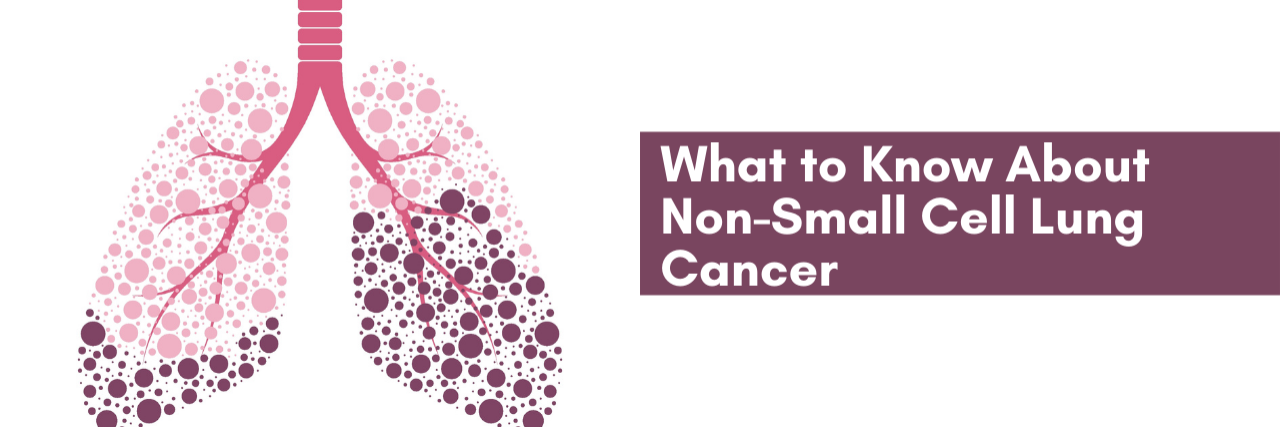No one wants to hear the three words you have cancer. For the estimated 235,760 adults who will get diagnosed with lung cancer this year, these words may come with anxiety, fear, and questions about the future and uncertainty about the long road ahead.
When Mighty contributor Judy Krauthamer first heard these words, she says her life completely shifted. She wrote about her experience in a story for The Mighty:
“Betrayed by my unquestioned belief that bad things only happen to other people, I was totally unprepared for the news. I was instantly embodied in a life of uncertainty and unknowing. I became lost under a veil of disease, immersed in hospital visits, statistics and CT scans.”
There are two main types of lung cancer: non-small cell lung cancer (NSCLC) and small cell lung cancer (SCLC). The first type — non-small cell lung cancer — accounts for 80% to 85% of lung cancers. People develop lung cancer when malignant cells form in the tissues of the lung. A big difference between non-small cell lung cancer and small cell lung cancer is one you probably could guess: for people with non-small cell lung cancer, the cancerous cells are larger, and for small cell lung cancer, the cancerous cells are small and round. About 80% to 85% of lung cancer patients have non-small cell lung cancer.
Unfortunately, lung cancer is the deadliest type of cancer, making up almost 25% of all cancer deaths.
Who Gets Non-Small Cell Lung Cancer?
Lung cancer actually most often occurs in folks who are older, with the average onset age being about 70. But, a small number of people are diagnosed before the age of 45, and both men and women get diagnosed at similar rates, with men being slightly more at risk. According to the American Cancer Society, the chance that a man will develop lung cancer is about 1 in 15. For a woman, this risk is about 1 in 17. Early warning signs of lung cancer include a cough that doesn’t go away, chest pain, hoarseness, shortness of breath, and loss of appetite.
Smoking increases your risk of getting diagnosed with lung cancer — although 10% to 20% lung cancer cases happen to people who never smoked or smoked fewer than 100 cigarettes in their lifetime. Other risk factors include: being exposed to second-hand smoke, exposure to radon, exposure to asbestos, and exposure to air pollution.
In can be hard to face a cancer diagnosis people may feel like you “caused.” Mighty contributor Cindy Eastman spoke about this in her story, “When Asked the Question ‘Did You Smoke?‘”
“Don’t give me that look… the judgmental one. Don’t look at me like that… I wish I never did. Or I wish I quit ten years earlier or whatever it would have taken to prevent this stage 4 lung cancer that found its way into my bones within two months.”
How Do You Treat Non-Small Cell Lung Cancer?
Treatment of non-small lung cancer depends on what stage the cancer is found. Surgery is an option for people in earlier stages of their cancer, while a combination of surgery, chemotherapy, radiation therapy, and immunotherapy may be recommended for people facing later stages.
If you’re a smoker who has been diagnosed with lung cancer, quitting has been shown to lead to better outcomes then those who continue to smoke through their cancer treatment.
Is There Hope for People With Non-Small Cell Lung Cancer?
The short answer is: yes. Thankfully, the number of new lung cancer cases continues to decrease as more and more people decide to quit smoking, and early detection and advancements in treatment are making the disease less deadly.
A cancer survivor’s journey isn’t over once they’ve reached remission. In her piece about finding yourself after surviving lung cancer, Mighty contributor Judy Krauthamer shared three myths about getting diagnosed with cancer. The first is that getting a cancer diagnosis means you’re alone. The second is getting diagnosed with cancer always has a “reason” behind it. The third is that there is one set outcome. In reality, you just never know what your journey will bring until you’re on it.
For cancer survivors looking for self-care tips, Mighty contributor Cara Tompot offers these eight tips in her piece, “8 Self-Care Tips for Cancer Survivors:”
- Think of you first: “Above all else, remember to focus on yourself — you deserve it.”
- Try something new: “Whether it’s something huge like international travel or simply trying to cook a new meal — go for it.”
- Do something you’ve always loved: “Is there something you’ve loved doing since you were a child or young adult? When was the last time you did that activity? If your answer isn’t in the last year, now’s the time.”
- Meet new people: “Between meeting people at chemotherapy treatments and connecting with other survivors at support groups… These new friends can have a major impact on your life because they understand what you are going through.”
- Give back: “By giving back to others combating the same cancer, you can help them cope with the same life-altering decisions you did throughout your battle.”
- Get in the “mental health” zone: “By focusing on your mental health and awareness, you can ensure that you are taking the best care of your whole self.”
- Say no: “All of the time, people feel obligated to say yes to various activities and events that you don’t want to participate in. Are you feeling overwhelmed or introverted? Say no. It’s OK.”
- Think of you first… again: “Do what makes you feel whole and right. Don’t let someone else’s expectations modify your ambitions, motivations and desires.”
If you’re a cancer survivor or facing a cancer diagnosis, what would you add?

